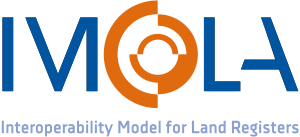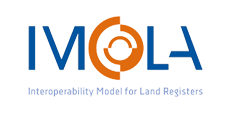IMOLA II

Background
The Europe Land Registry Association, (ELRA), has developed the IMOLA I project in order to produce a model for standardized land registry outputs. The use of different techniques and tools is a common practice to cover all stages in the system development lifecycle of an industry, generating a very good number of variable registries. Moreover, these registries are commonly encoded in different formats and can only be accessed, in most cases, through proprietary and non-standard protocols.
IMOLA created a standard for that: the European Land Registry Document (ELRD) formulates reference information within a structure of common fields (Template), developed through an XSD / XML scheme that allows semi-automatic processing of information through shared rules with metadata derived from a thesaurus. It is published by a style sheet, giving homogeneity to the registration information, which flows through the e.Justice portal re-using the building pads e.Codex and ISA.
Once we recognize the utility of the ELRD developed in IMOLA I, which can be considered as the interface through which the interconnection of land registers has to operate, it is necessary to achieve more complex goals for an effective implementation of the ELRD. The next step is to deal with the interoperability problem among partners. This scenario can be considered a real nightmare for information reuse and, more specifically, IMOLA II will allow us to take advantage of the implicit knowledge encoded in the different registries.
Possible solutions should imply the creation of a real collaborative development environment where tools can exchange and share data, information and knowledge, but, at the moment, it is hard to reach. This would be the target for IMOLA II.
With this project ELRA contributes to the achievement of the objectives of the European e-Justice Strategy specified in the Multiannual Action Plan 2014-2018.
Aims and Objectives
The main aim of IMOLA II, as a follow-up project, is to provide an interoperability platform among Land Registers in Europe. Controlled vocabularies are essential elements for the IMOLA II project a starting point for achieving the semantic shared repository, (Knowledge Repository).
• To develop a real and complete information model to be used within the scope of the LRI project through the e-Justice Portal, linked directly to the semantic domain represented by IMOLA controlled vocabularies, glossaries and thesaurus (Knowledge Repository).
• To develop a Web Service related to the Knowledge Repository.
• To develop an input system by means of a web page to support the feedback of Contact Points as Land Registry experts integrated on the European Land Registry Network, (ELRN).
Results of the Project
• A Knowledge Repository integrated on the e-Justice portal as a controlled vocabulary (Thesaurus).
• To achieve the semantic interoperability among the Land Registers’ Information to ease the implementation of the ELRD as standardized common output.
• Use controlled vocabularies as part of the descriptive metadata to characterize the content of the information objects of the Land Registries.
• The use of such vocabularies is a key issue; because these metadata may be invoked by mean of web service as National Land Registers Systems as customers by a web page.
• This model for interoperability should contribute to fostering a single European real estate and mortgage market, making it more efficient and transparent.
• The assistance tools complementing the single point of access within the e-Justice portal will enable an effective use of this information.
Tender
For the conclusion of a service contract concerning the semantic and technical realization of the IMOLA II project.
(JUST AG-2016-05/Grant Agreement nº 764350)
TERMS OF REFERENCE AND TECHNICAL CONDITIONS + ELRD XSD Schema
Disclaimer: “The content of this page represents the views of the author only and is his/her sole responsibility. The European Commission does not accept any responsibility for use that may be made of the information it contains.”


